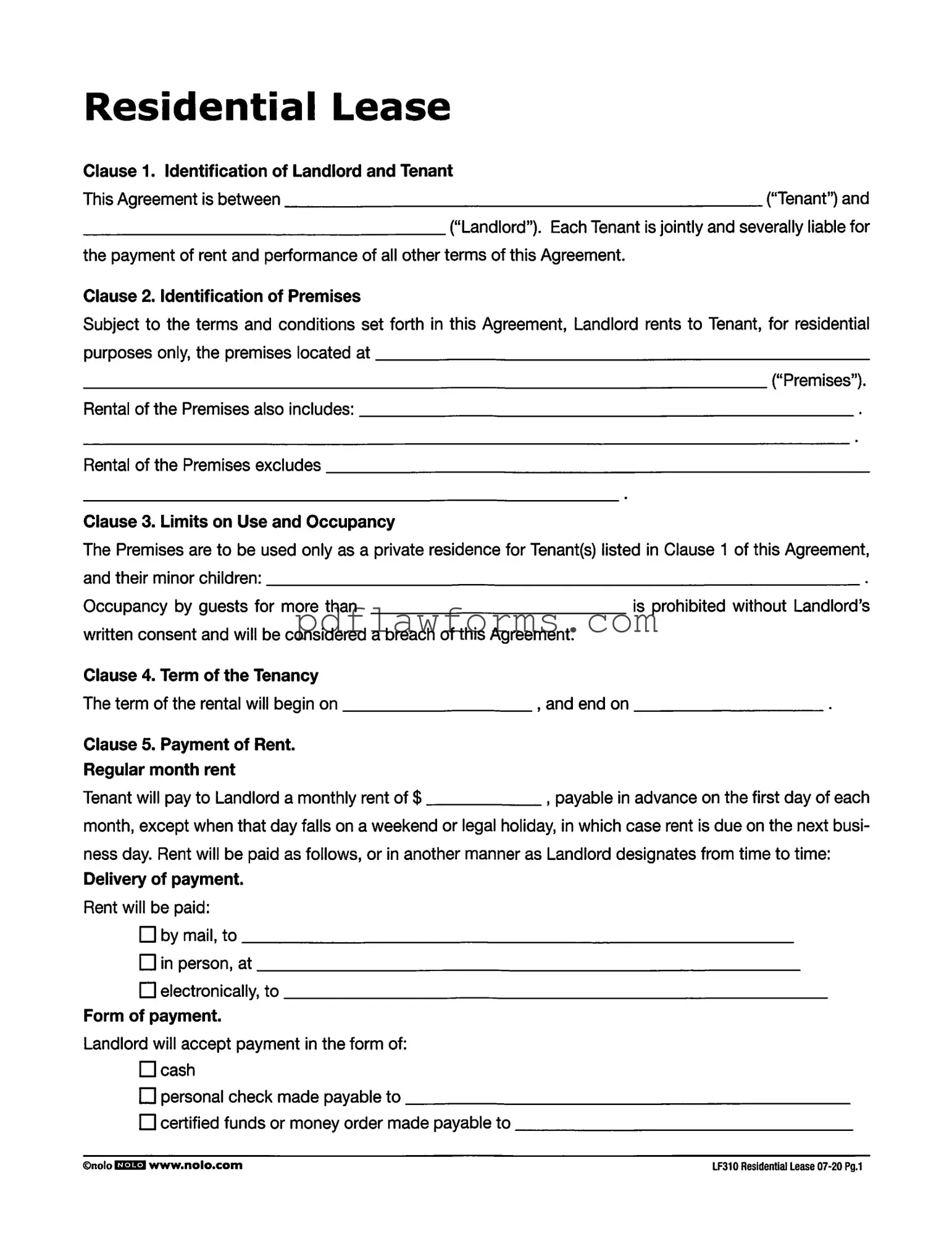Filling out the LF310 Residential Lease form can be straightforward, but several common mistakes can lead to complications. One of the most frequent errors is failing to clearly identify both the Landlord and the Tenant. It is crucial to fill in the names accurately in Clause 1. Omitting or misspelling names can create confusion and potential legal issues later on.
Another mistake involves the identification of the premises. In Clause 2, tenants must ensure that the address of the rental property is complete and accurate. Missing details can lead to misunderstandings about the location of the rental unit, which could complicate matters if disputes arise.
Many tenants overlook the importance of specifying the term of the tenancy. Clause 4 requires clear start and end dates. Failing to provide these dates or leaving them blank can create ambiguity regarding the rental period, which may affect both parties' expectations and responsibilities.
When it comes to the payment of rent, tenants often make errors in Clause 5. They may forget to fill in the correct rental amount or neglect to specify the method of payment. This omission can lead to disputes about how and when rent should be paid, potentially resulting in late fees or other penalties.
Clause 6 addresses late charges, yet many tenants do not pay close attention to the conditions outlined. It is essential to fill in the number of days after which a late charge applies, as well as the specific amounts. Misunderstanding these terms can lead to unexpected financial consequences.
Another common oversight is related to the security deposit. In Clause 8, tenants must specify the amount of the deposit. Additionally, they should understand the conditions under which the deposit may be withheld. Failing to clarify these details can lead to disputes when it comes time to return the deposit.
Utilities can also be a source of confusion. In Clause 9, tenants should clearly outline which utilities they are responsible for paying. Leaving this section incomplete can lead to misunderstandings about who pays for what, resulting in unexpected bills.
Finally, tenants often ignore the implications of Clause 10 regarding subletting. It is crucial to understand that subletting without the landlord's consent can be grounds for terminating the lease. Tenants should ensure they are aware of this clause and comply with its requirements to avoid losing their rental agreement.
